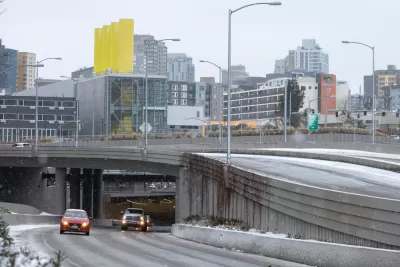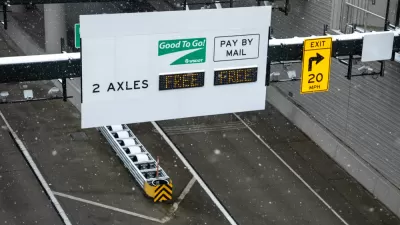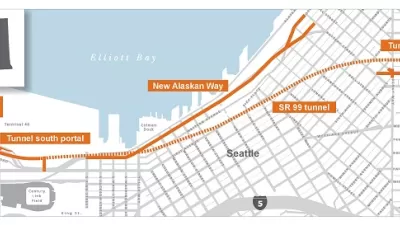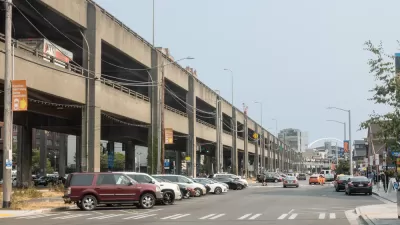Promises of congestion and thousands of cars spilling on to quiet residential streets proved unfounded after the first week with tolls on the Highway 91 tunnel in Seattle.

On Saturday, November 9, drivers had their first encounter with a toll plaza charging money for passage through the Highway 99 tunnel, the closely monitored replacement for the Alaskan Way Viaduct.
Jose Cortright checks-in with the Highway 99 project, finding predictions of "carmageddon" alarmist and immaterial. Cortright cites Google Map traffic conditions on a typical Tuesday as well as Tuesday, November 12, a few days after the tunnel opened, and finds free flowing traffic through both the tunnels and on surrounding streets.
Overall, if you compare these two pictures, it’s pretty clear that today’s traffic situation in downtown Seattle is much better than a typical day. Sure, Interstate 5, the freeway to the East of downtown Seattle is congested (as it is most late afternoon weekdays) But downtown Seattle streets, particularly on the west side of downtown are “green.” or free flowing. Overall, there’s a lot more “green” on Tuesday’s traffic charts than on a typical day. In other words: no gridlock or Carmaggedon here.
This isn't the first time predictions of traffic doom followed the Highway 99 project—similar predictions proved untrue when the Alaska Way Viaduct close before the new tunnel opened. And, according to Cortright, the Seattle example is not the only very recent example of the same narrative. The new bus priority granted on 14th Street in Manhattan saw the same predictions of overflow traffic on quiet side streets with the same result: relatively calm and flowing traffic conditions.
FULL STORY: Carmaggedon does a no-show in Seattle, again

Maui's Vacation Rental Debate Turns Ugly
Verbal attacks, misinformation campaigns and fistfights plague a high-stakes debate to convert thousands of vacation rentals into long-term housing.

Planetizen Federal Action Tracker
A weekly monitor of how Trump’s orders and actions are impacting planners and planning in America.

In Urban Planning, AI Prompting Could be the New Design Thinking
Creativity has long been key to great urban design. What if we see AI as our new creative partner?

King County Supportive Housing Program Offers Hope for Unhoused Residents
The county is taking a ‘Housing First’ approach that prioritizes getting people into housing, then offering wraparound supportive services.

Researchers Use AI to Get Clearer Picture of US Housing
Analysts are using artificial intelligence to supercharge their research by allowing them to comb through data faster. Though these AI tools can be error prone, they save time and housing researchers are optimistic about the future.

Making Shared Micromobility More Inclusive
Cities and shared mobility system operators can do more to include people with disabilities in planning and operations, per a new report.
Urban Design for Planners 1: Software Tools
This six-course series explores essential urban design concepts using open source software and equips planners with the tools they need to participate fully in the urban design process.
Planning for Universal Design
Learn the tools for implementing Universal Design in planning regulations.
planning NEXT
Appalachian Highlands Housing Partners
Mpact (founded as Rail~Volution)
City of Camden Redevelopment Agency
City of Astoria
City of Portland
City of Laramie





























